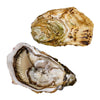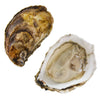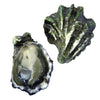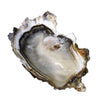
WT Features
Know Your Oysters
Five Common Oyster Species
Forget about the 1599 A.D. mantra of eating oysters only in months that end in ‘r’. Old and sage advice for oyster eaters of times past when refrigeration and ice were yet to be invented and the chances for algae bacteria such as red tide increased. Back in the day nearly all oysters were harvested from the wild. Warmer waters trigger spawning season, a time when the muscle flesh basically loses its elasticity. Today, thanks to modern oyster farmers, science and strict environmental regulations, it is safe to eat oysters in the summertime. Have no fear, gauges are here: water quality and bacteria are continually monitored, and many oysters are bred to be sterile so they never become flaccid.
Malpeque | Prince Edward Island
With year round chilly waters, these oysters are a summertime pleasure, succulent and invigoratingly salty.

Pemaquid | Maine
A quintessential Maine experience, this firmly textured, briny, lemony & light bivalve is as imbedded in Maine culture alongside L.L. Bean Boots and Lobsters.

Blue Point | Long Island Sound

Kumamoto | West Coast

Coromandel | New Zealand

Ready to Plan an Oyster Feast?
Shop our Oyster Plates Collection
Know Your Oysters
Your basket is currently empty.
Continue shopping
Write it on your heart that every day is the best day of the year.
Ralph Waldo Emerson

We make a life by what we give.
Winston Churchill






